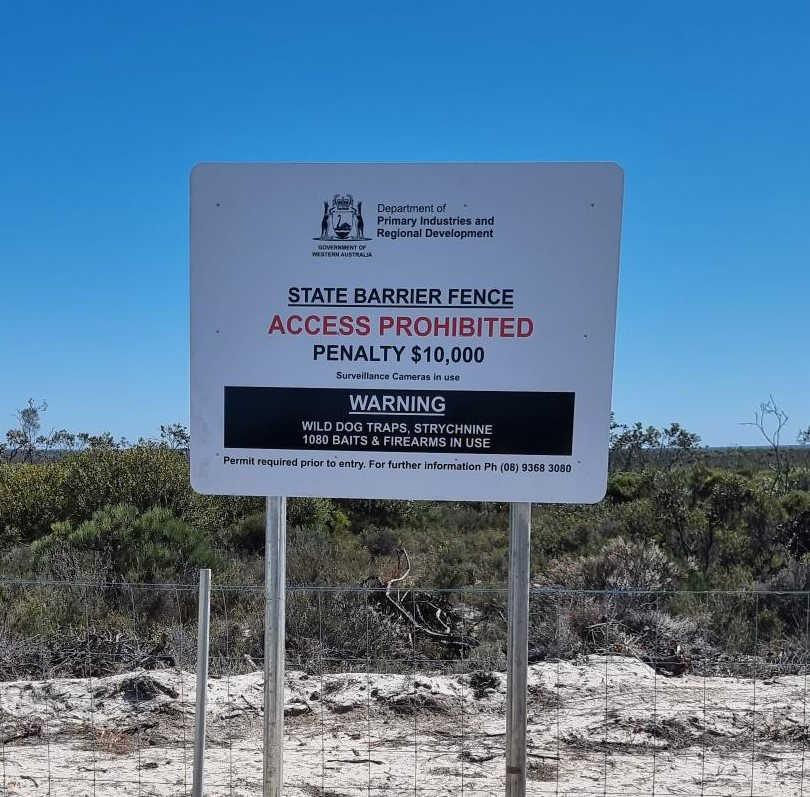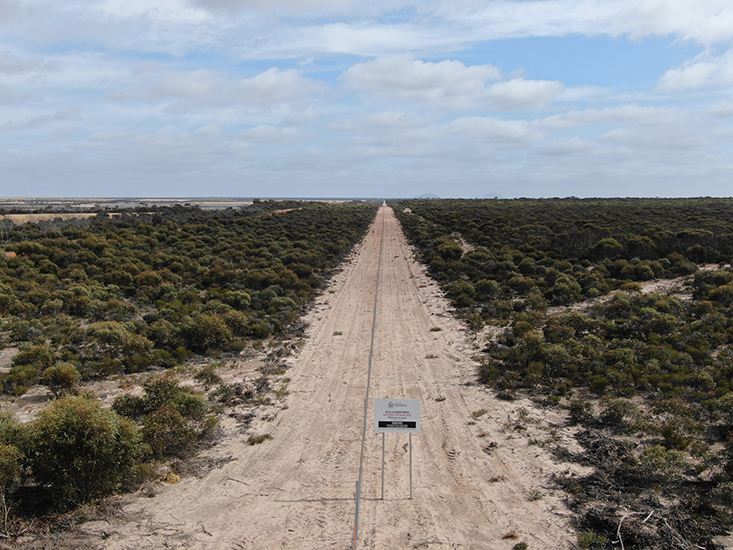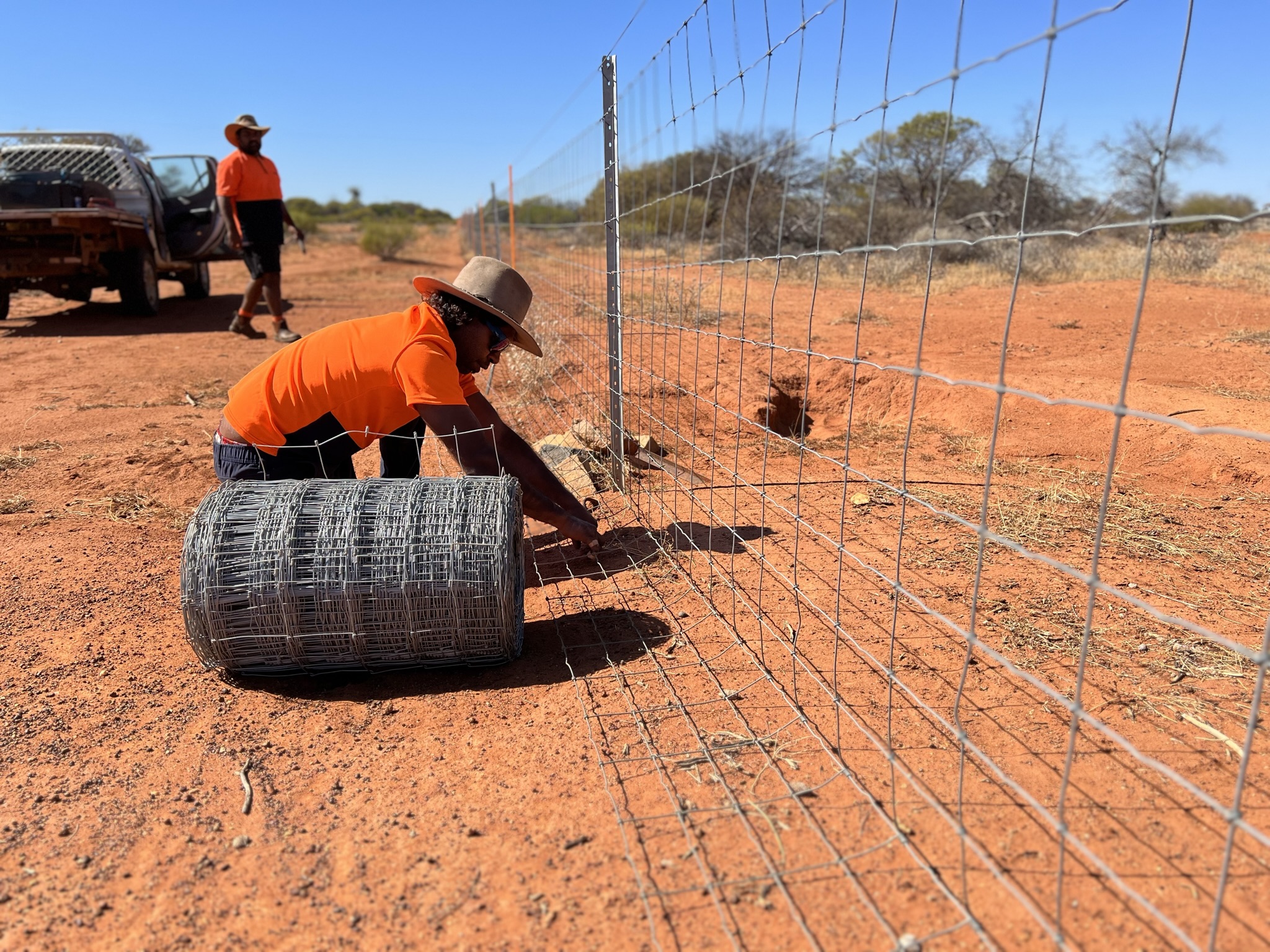At approximately 1,350 km in length, the fence extends from the Zuytdorp cliffs, north of Kalbarri (in the state’s north), to west of Salmon Gums (in the state’s southeast).

State Barrier Fence reserve access and travel restricted
The State Barrier Fence reserve is a hazardous worksite and unauthorised travel on the reserve is a safety risk to department staff, contractors, and authorised personnel. Unauthorised travel also presents a significant environmental and animal welfare risk.
Written consent must be provided by the department. To seek access to the 20 m State Barrier Fence reserve, a state asset, apply for consent by emailing the State Barrier Fence team at sbf@dpird.wa.gov.au. See ‘How to apply for access to State Barrier Fence Reserve’ below for information required by the department by people seeking consent to access and travel in the State Barrier Fence Reserve.
Random access checks can be undertaken, and surveillance cameras may be in place to record unauthorised vehicles. Unauthorised vehicles could be fined up to $10,000.

State Barrier Fence and wild dogs
The State Barrier Fence is a major program in the Western Australian Wild Dog Action Plan. Wild dogs have become a significant threat to livestock enterprises in agricultural areas since the 1980s, with wool in decline, and fewer staff carrying out control in pastoral areas.
The fence plays an important role in supporting the efforts of landholders, who are responsible for controlling wild dogs on their properties. The Western Australian Government, through the department, supports landholders through initiatives of the Wild Dog Action Plan.
Regular surveys of landholders along the State Barrier Fence have shown that investments in upgrading the fence are having a positive impact on wild dog management.

Ongoing maintenance
Ongoing maintenance is needed to keep the fence functioning as an effective barrier against wild dogs and other animal pests.
The department is responsible for maintenance, which includes minor repairs, replacing fence wires and posts, small fence constructions, re-hanging gates and clearing the fence track.
We have engaged Aboriginal businesses to undertake this work to provide job opportunities and build capacity for Aboriginal people.
The entire State Barrier Fence is inspected regularly, and routine repair, and replacements are undertaken to ensure the fence remains an effective barrier.
Report maintenance issues
Email our State Barrier Fence team to report any State Barrier Fence maintenance issues.
Email State Barrier FenceA project to extend the State Barrier Fence to enclose Esperance and the southeastern agricultural area is underway. Once the Esperance extension is complete the State Barrier Fence will extend over 1,800 km.
The $6.9 million Western Australian Government investment is part of a broad range of measures to support the WA livestock industry to combat wild dogs. Contributions to the project have also been made by the Australian Government, and the Shires of Esperance and Ravensthorpe.
The department is responsible for managing construction of the fence.
Access and travel along the State Barrier Fence reserve without written consent of the department is an offence under the Biosecurity and Agriculture Management Regulations 2013.
Members of the public may drive on roads that transect the reserve. There is clear signage to advise where access is prohibited.
Who can apply for access
Applications are assessed by the department on a case-by-case basis. Letters of consent are generally restricted to the following individuals and organisations with a specific and legitimate business need.
Group 1: Primary purpose access route for those with direct vested interest
- Department staff
- Recognised Biosecurity Groups
- Licensed pest management technicians
- Department maintenance contractors
Group 2: Individuals who may require access for specific or special purposes
- Department of Biodiversity, Conservation and Attractions (DBCA) and WA Herbarium staff
- WA Police and Department of Fire and Emergency Services
- Department of Mines and Petroleum (mining companies), and Department of Planning, Lands and Heritage
- WA Museum, university researchers
- Local government, Main Roads WA, Water Corporation, Western Power, telecommunications companies
- Local Indigenous groups
- Apiarists, sandalwood cutters.
Information to provide when seeking access
People seeking to access the reserve should email the following details to sbf@dpird.wa.gov.au:
- applicant full name, address, and contact number(s)
- applicant business name, address, and contact number(s)
- proposed location or section of fence for the intended travel
- statement on why access to the reserve is required
- date(s) access is required
- vehicle registration.
Approved applicants will receive written consent by the department within 5 business days of providing all required information.
The original fences (numbers 1, 2, and 3) were constructed between 1902 and 1907 and were known as Rabbit Proof Fences. They were intended to prevent rabbits from moving into the state from the east.
As the significance of the fence to block rabbits decreased, it became evident the fence played a major role in minimising the impact of major periodic migrations of emus. The fence was later known as the State Vermin Barrier Fence, and the Emu Fence, before its current name - State Barrier Fence.
The publication, History of the state vermin barrier fences, formerly known as rabbit proof fences (Crawford, J S, 1969) provides an overview of the early history of the fence.
Today, the fence plays an important role in restricting the movement of wild dogs, which present a significant threat to livestock enterprises, into the south west of Western Australia. The fence also provides protection from large migration of emus, which can affect grain crops, from the rangelands into the south west agricultural areas.
